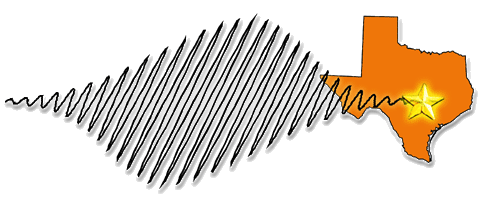|
Astrophysical shocks play an important role in the evolution of the inter-stellar medium (ISM) providing an energy source, and triggering a variety of phenomena including star formation. On galactic time-scales, supernovae are a frequent source of such shock waves, which expand into the surrounding ISM. If the circumstellar medium is sufficiently dense, radiation can play an important role in the energy transport dynamics of the supernova remnant blast wave. Because of the complicated dynamics associated with these astrophysical phenomena, there is a strong motivation to produce radiative blast waves in the laboratory. A radiative blast wave can occur over a wide range of temperatures and densities in astrophysical shocks but is more difficult to achieve in the laboratory.
To produce a laser driven radiative blast wave, it is necessary to produce a localized high temperature plasma in a modest density gas without perturbing the surrounding medium. We create radiative blast waves in a few different ways. One technique we employ is to focus a high energy laser (such as the LLNL Janus laser) onto a solid surrounded by gas such that the explosion of the solid creates a shock wave in the gas (pictured on the right at top).
Another technique uses the high absorption efficiency of high intensity femtosecond lasers in gases containing large clusters. An intense laser focused into a strongly absorbing cluster gas will produce a hot, elongated filament which will subsequently develop into a cylindrical shock (pictured at the right). This exploding blast wave can be optically diagnosed with a probe beam. Variation in the time delay between the heating beam and the probing beam yields time-resolved information on the evolution of the material.

Research in this area is aimed at understanding the hydrodynamic evolution and instabilities in a high velocity radiative blast wave. This is done by comparing time resolved pictures of blast waves with simulations .

Here is a review article on intense lasers and astrophysics: [PDF]
Some interesting papers in this topic from our previous research:
-
M. J. Edwards, A. J. MacKinnon, J. Zweiback, K. Shigemori, D. Ryutov, A. M. Rubenchik, K. A. Keilty, E. Liang, B. A. Remington and T. Ditmire, "Investigation of Ultrafast Laser Driven Radiative Blast Waves," Phys. Rev. Lett. 87, 085004 (2001). [PDF]
-
K. Shigemori, T. Ditmire, B. A. Remington, V. Yanovsky, D. Ryutov, K. G. Estabrook, M. J. Edwards, A. J. MacKinnon, A. M. Rubenchik, K. A. Keilty, and E. Liang “Developing a Radiative Shock Experiment Relevant to Astrophysics,” Astrophys. J. Lett., 533, L159 (2000). [PDF]
-
J. Zweiback, T.E. Cowan, J. Hartley, G. Hays, R. Howell R.A. Smith, C. Steinke, and T. Ditmire, "Characterization of Fusion Burn Time in Exploding Deuterium Cluster Plasmas ," Phys. Rev. Lett.,85, 3640 (2000). [PDF]
-
K. A. Keilty, E. P. Liang, T. Ditmire,B. A. Remington, K. Shigemori and A. M. Rubenchik, “Modeling of Laser-Generated Radiative Blast Waves,” Astrophys. J. 538, 645 (2000). [PDF]
-
T. Ditmire, K. Shigemori, B. A. Remington, K. Estabrook, R. A. Smith, “The Production of Strong Blast Waves Through Intense Laser Irradiation of Atomic Clusters,” Astrophys. J. Supp. 127, 299 (2000). [PDF]
|
|




